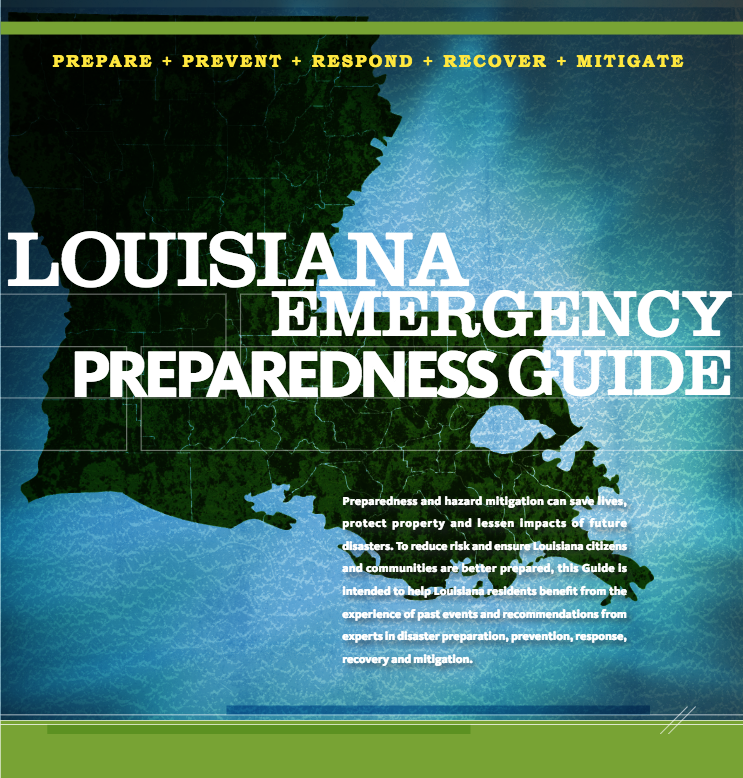There is still a lot of uncertainty with Harvey over Louisiana. Currently, rainfall is the main concern for our area. The National Weather Service is predicting that Southwest Louisiana will see 10 to 20 inches of rain between tonight and tomorrow, Central Louisiana one to five inches of rain, and South Central Louisiana two to eight inches of rain, East Baton Rouge Parish is expected to receive 4-10 inches of rain over the next seven days. Stay safe, be prepared! While they don’t predict this to be a repeat of the August flooding, Harvey is here and expected to bring torrential rains and cause flash flooding and possibly tornadoes in some areas of Louisiana. The National Weather Service says the slow-moving system is expected to impact Louisiana over the next seven days.
Residents are urged to have an emergency plan in place and be prepared {sand bag list below}. Having been through hurricanes Andrew, Katrina, Rita , Issac and the Great Flood of 2016, natural disasters are something I have become accustomed to preparing for.
As with most things, preparation is key. Issac, sneaked up on me. When I finally made it to the store to get the basics, all I found were empty shelves.
Baton Rouge, Louisiana Emergency Preparedness Resources
Resources
- Baton Rouge Gov. Emergency Preparedness
- Red Stick Ready
- Governor’s Office of Homeland Security & Emergency Preparedness
- Louisiana Department of Transportation & Development
- Louisiana District of the USGS (River Stages)
- Louisiana State Police
- National Hurricane Center
- National Weather Service
- Traffic Information
- FEMA – Are You Ready? Guide
- National Weather Service Weather Safety
- Be a Force of Nature with NOAA’s Weather-Ready Nation
- NWS Storm-Ready Sites & Communities
- Ready.gov Kids
This Louisiana Emergency Preparedness Guide is an excellent, comprehensive resource! From identifying the most likely risks to providing sheltering information, evacuation routes, listing supplies to identifying special needs and more. This Guide should be YOUR Guide to personal planning and business planning.
Top 10 Emergency Preparedness Apps
- Red Stick Ready (iOS) The East Baton Rouge Parish Mayor’s Office of Homeland Security and Emergency Preparedness strives to provide critical information to the citizens of East Baton Rouge Parish to help them prepare for, respond to and recover from all emergency situations.
- iMapWeather Radio (iOS) this is by far my favorite app but it does cost $9.99. You will receive critical voice and text alerts on threatening weather events. Your iPhone will “wake up” and also “follow you” with alerts wherever you go. Listen to local weather forecasts while you are on the move. Enjoy the power of a NOAA Weather Radio, with all the convenience and precision of a smart phone. Winner of MediaPost’s Appy Award in the weather category.
- Get A Game Plan – FREE – Get-A-Game-Plan is the most complete and easy way to access emergency preparedness information on a mobile device. The Louisiana Governor’s Office of Homeland Security and Emergency Preparedness created the app for the citizens of Louisiana to provide access to important information relevant to preparedness in the event of a security or natural disaster event.
- Hurricane Tracker –(iOS) $2.99 offers detailed storm maps, National Hurricane Center info, threat level maps, audio/video forecast updates, real-time feeds and push alerts.
- Hurricane — (iOS) FREE American Red Cross for both Android or iOS is a newer, totally free addition to Android’s growing hurricane-tracking stable, but it’s more than just a tracker — this app lets you “monitor conditions in your area or throughout the storm track, prepare your family and home, find help and let others know you are safe even if the power is out
- iMPrepared –(iOS) FREE iPad App—iMPrepared helps plan for disasters with one convenient app that includes a compass, flashlight, disaster RSS feeds, and a S.O.S. signal.
- FEMA Install the FEMA App, available for Apple, Android, and Blackberry mobile devices.
- StopDisaster- $1.99 If you can’t stop the calamity, you can stop it from turning into a disaster if you are organized. The app provides a handy series of items you’ll need on hand for various emergencies – floods, earthquakes, high winds etc.
- Phone Aid – $1.99 CPR is one of the things not covered by most basic preparedness courses (it’s standalone training) this app offers a series of slideshows that will help jog your memory if you’ve done CPR training and, if not, provides some first aid measures to do while you wait for emergency services.
- Disaster Alert – (Andriod) – Disaster Alert (by PDC) – Current global disaster info on an interactive map Disaster Alert (by PDC), Active Hazards on an interactive map and in a list as they are occurring around the globe. Additional hazard information can be viewed and shared.
Preparation Before the Storm:
— Use hurricane shutters or board up windows and doors with 5/8 inch plywood.
— Bring outside items in if they could be picked up by the wind.
— Clear gutters of debris.
— Reinforce the garage door.
— Turn the refrigerator to its coldest setting in case power goes off. Use a cooler to keep from opening the doors on the freezer or refrigerator.
— Fill a bathtub with water.
— Get full tank of gas in one car.
— Go over the evacuation plan with the family, and learn alternate routes to safety.
— Learn the location of the nearest shelter or nearest pet-friendly shelter.
— Evacuate if ordered and stick to marked evacuation routes, if possible.
— Store important documents — passports, Social Security cards, birth certificates, deeds — in a watertight container.
— Have a current inventory of household property.
— Leave a note to say where you are going.
— Unplug small appliances and electronics before you leave.
— If possible, turn off the electricity, gas and water for residence.
Emergency Preparedness list:
— A three-day supply of water, one gallon per person per day.
— Three days of food, with suggested items including: canned meats, canned or dried fruits, canned vegetables, canned juice, peanut butter, jelly, salt-free crackers, energy/protein bars, trail mix/nuts, dry cereal, cookies or other comfort food.
— A can opener.
— Flashlight(s).
— A battery-powered radio, preferably a weather radio.
— Extra batteries.
— A first aid kit, including latex gloves; sterile dressings; soap/cleaning agent; antibiotic ointment; burn ointment; adhesive bandages in small, medium and large sizes; eye wash; a thermometer; aspirin/pain reliever; anti-diarrhea tablets; antacids; laxatives; small scissors; tweezers; petroleum jelly, having the best inversion table for back pain is also a plus and it will help a lot with any pain emergencies.
— A small fire extinguisher.
— A seven-day supply of medications.
— Vitamins.
— A multipurpose tool, with pliers and a screwdriver.
— Cell phones and chargers.
— Contact information for the family.
— A sleeping bag for each person.
— Extra cash.
— A silver foil emergency blanket.
— A map of the area.
— Baby supplies.
— Pet supplies.
— Wet wipes.
— A camera (to document storm damage).
— Insect repellent.
— Rain gear.
— Tools and supplies for securing your home.
— Plastic sheeting.
— Duct tape.
— Dust masks.
— An extra set of house keys.
— An extra set of car keys.
— An emergency ladder to evacuate the second floor.
— Household bleach.
— Paper cups, plates and paper towels.
— Activities for children.
— Charcoal and matches, if you have a portable grill. But only use it outside.
Current Baton Rouge Sandbag locations:
– BREC Airline Highway Fairgrounds – 16072 Airline Highway
– BREC Alsen Park – 601 Old Rafe Meyer Road
– BREC Doyles Bayou Park – 7801 Port Hudson-Pride Road
– BREC Flannery Road Park – 801 South Flannery Road
– BREC Hartley-Vey at Gardere Park – 1702 Gardere Lane
– BREC Memorial Stadium – 1702 Foss Street
– BREC Lovett Road Park – 13443 Lovett Road
– St. George Fire Department Headquarters – 14100 Airline Highway
– Chaneyville Volunteer Fire Department – Station 40 – 22790 Reames Road
Residents are urged to bring their own shovels to fill the sandbags. Real-time information about the locations can also be found at:
Recover
- Wait until an area is declared safe before returning home.
- Remember that recovering from a disaster is usually a gradual process.
Sources: American Red Cross, Federal Emergency Management Agency, National Hurricane Center




